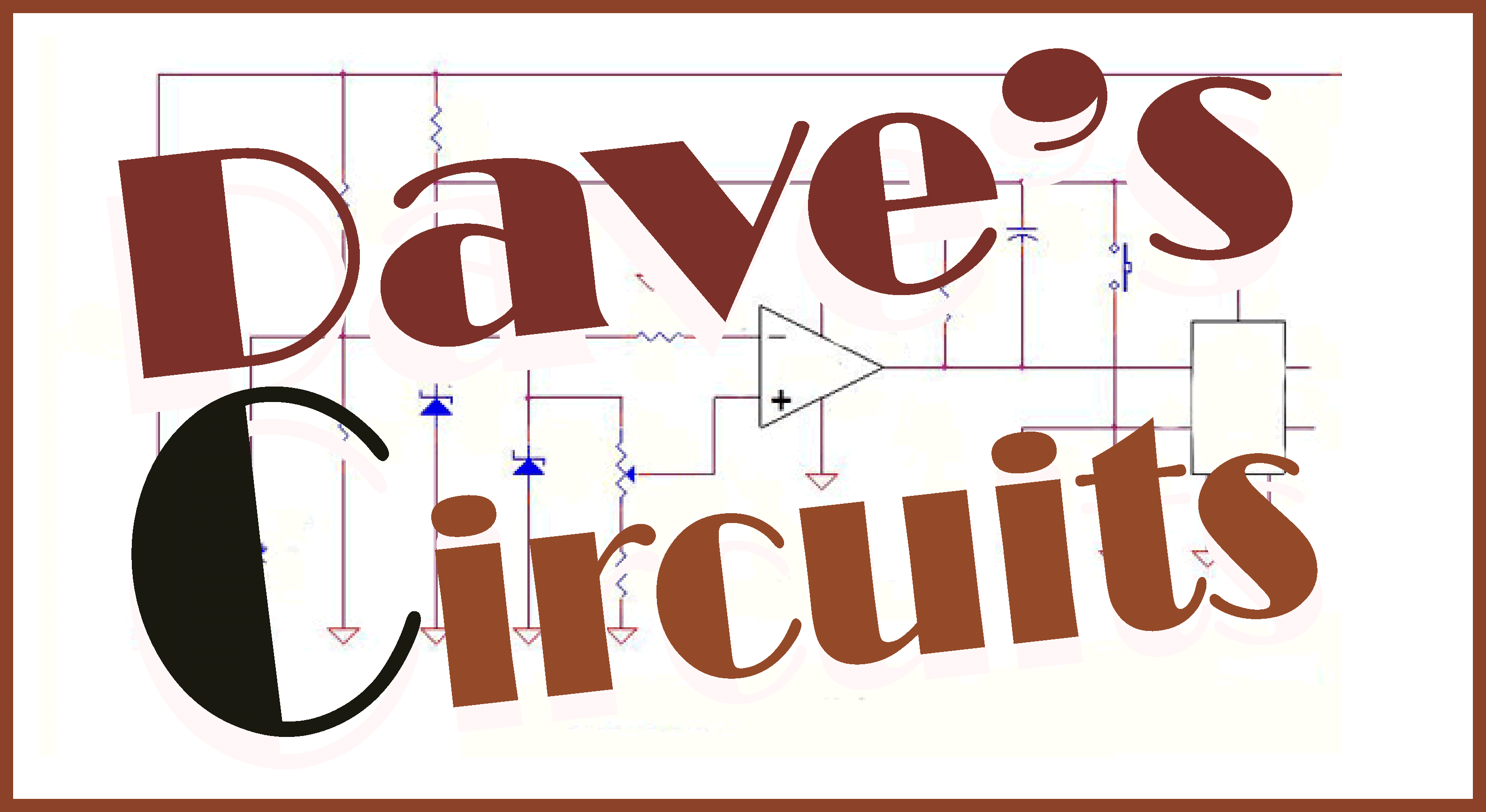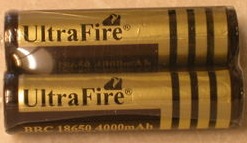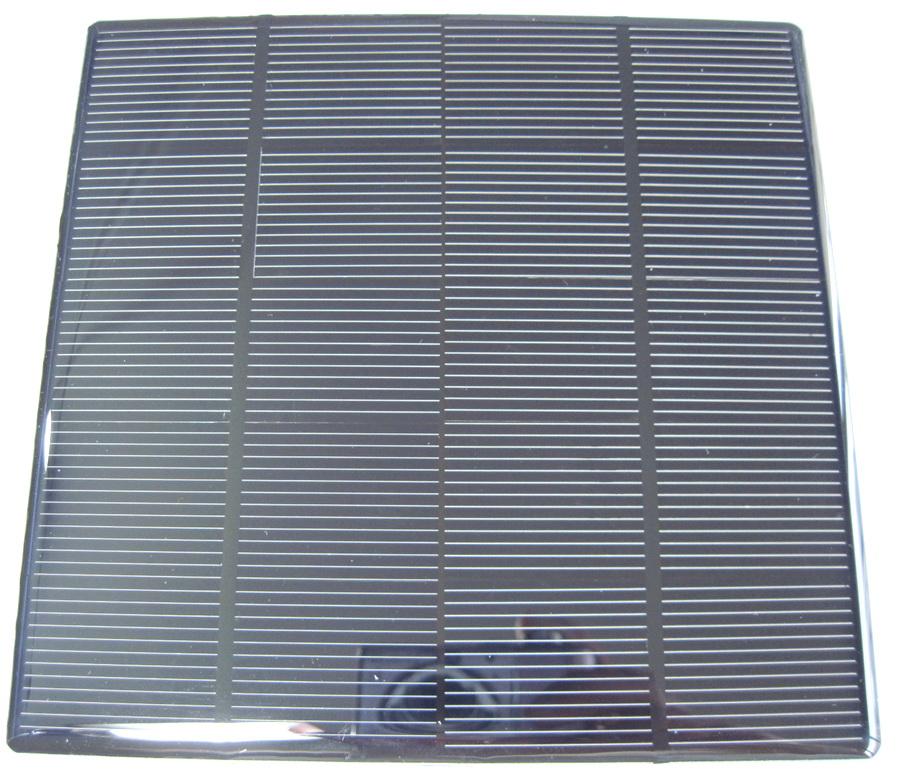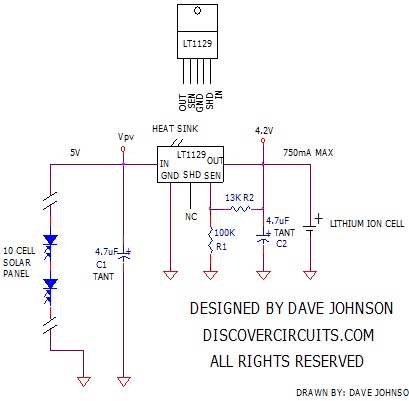|
 |
Circuits designed by David Johnson,
P.E.
Last Updated on:
Monday, December 25, 2017 02:09 PM
List of Dave's Circuit Designs
The contents & graphics of
Discovercircuits.com are copyright protected.
LINKING to Dave's circuits is permitted but DO NOT COPY any files to your WEB SITE
server |
|
|
|
|
More Lithium
Battery Chargers
Solar Cell Circuits |
|
Solar Lithium
Ion Battery Charger Using LT1129
December 7, 2012 |
|
I have been designing a number of
solar powered devices lately. Many of them use just a single 3.6v lithium ion
battery. These batteries like to be charged from a fixed 4.2v source with a
charging current limited to about C/8, where C is the milliamp-hour rating of the
part. When being charged from a small solar panel, the panel should be selected
so the charging current does not exceed C/8. In such cases, there is no need for
additional charging current control. However, some mechanism is still needed to
prevent the battery from discharging back into the solar panel, when the panel is in
darkness. Usually, a diode is inserted between the battery and the charge control
circuit. |
|
|
 |
I
have been designing a number of solar powered devices lately. Many of them use
just a single 3.6v lithium ion battery. These batteries like to be charged
from a fixed 4.2v source with a charging current limited to about C/8, where C is
the milliamp-hour rating of the part. When being charged from a small solar
panel, the panel should be selected so the charging current does not exceed C/8.
In such cases, there is no need for additional charging current control.
However, some mechanism is still needed to prevent the battery from discharging back
into the solar panel, when the panel is in darkness. Usually, a diode is inserted
between the battery and the charge control circuit. But, I wanted something
with a lower voltage drop. After looking around at various charging circuits, I
decided to try using a low power voltage regulator from Linear Technology.
Their LT1129 has the right characteristics I needed. It has a maximum current
rating of 750ma and a reasonable 400mv voltage drop when delivering such current.
The voltage drop is much less, as the current tapers off, when the battery reaches a
full charge. Two resistors program the part for a fixed 4.2v output voltage.
Finally, the back feed current, when the input is at zero volts, is a very low
level, perfect for solar power applications. A couple tantalum capacitors, one at
the input and on at output complete the circuit.
If a 10 cell 5v solar panel
is used, no heat sink is needed. The TO220 package is big enough to dissipate
the 0.6 watts. A solar panel which can produce 750ma of current would be big
enough to charge some of the newer 4 Amp-hour lithium ion cells appearing on the
market. |
| 4
Amp-hour Lithium Ion |
 |
|
5v 750ma Solar panel |
|
|
|
Click
on Drawing Below to view PDF version of Schematic |
|
 |
|
|
|
|
|
|